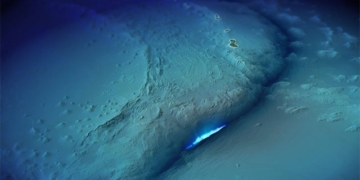Are we alone in the universe? This is a question that humanity has pondered throughout its history.
Are Humans Alone in the Universe?
In 1977, The New York Times published an article titled “Searching for an End to Loneliness in the Universe”, describing the efforts of physicists to collect radio signals from extraterrestrial beings. This initiative, known as the Search for Extraterrestrial Intelligence (SETI), was still in its early stages, and its supporters were trying to convince the U.S. Congress that this was a worthy idea for investment.
The quest to determine whether anything exists beyond our planet has made significant scientific strides in nearly half a century since that article was published. Back then, astronomers had yet to discover any planets outside our Solar System. Today, we know that the Milky Way contains countless different worlds. The oceans on our planet were once thought to be an exception, but evidence today shows that many moons in the Solar System harbor water beneath their surfaces.

(Illustration: NASA).
Our understanding of the environments where life could exist has also expanded due to the discovery of extremophiles, organisms that can survive in harsh conditions—hotter, saltier, more acidic, and more radioactive than previously thought, including those living around hydrothermal vents on the ocean floor.
We are now closer than ever to understanding how common life-sustaining worlds like our planet are in the universe. New tools, including machine learning and artificial intelligence, may help scientists reassess previous notions of what constitutes life. Future tools will be able to detect the atmospheres of distant planets and may retrieve samples from our Solar System to determine whether they contain the right chemicals for life to develop.
“I believe that in our era, we can achieve this. We will know if there is life on other planets,” says Ravi Kopparapu, a planetary scientist at NASA’s Goddard Space Flight Center.
While humans have long speculated about distant worlds, there has been little concrete evidence presented. The first planets around stars—known as exoplanets—were discovered in the early 1990s, but it wasn’t until NASA launched the Kepler Space Telescope into orbit that astronomers understood how common they were. Kepler monitored hundreds of thousands of stars, searching for the faint light from them to detect transiting planets. This mission increased the known number of exoplanets from just a handful to 5,500.
Kepler was developed to help determine the prevalence of Earth-like planets orbiting Sun-like stars at the right distances for liquid water to exist on their surfaces. While a perfect Earth-like world has yet to be found in the cosmos, researchers can use the discoveries made to estimate how many planets could potentially support life. The most current estimates suggest that between 10% and 50% of Sun-like stars may have planets like ours.
“There are billions of Sun-like stars in the Milky Way, and if half of them have Earth-like planets, there could be billions of rocky, habitable planets,” states Jessie Christiansen, an astrophysicist at Caltech in Pasadena, California.
The Search for Life Beyond Earth
Determining whether these planets actually harbor life is no easy task. While astronomers want to focus on Sun-like stars, there are significant technological challenges. NASA’s James Webb Space Telescope is currently observing smaller, cooler, and redder stars known as red dwarf stars. These environments might support life, but at this point, no one is certain.
For liquid water to exist on the surface, planets orbiting M-dwarf stars will need to be closer to their stars. James Webb is studying Trappist-1, an M-dwarf star located 40 light-years away, which has seven small rocky planets. Four of them are at the right distance for liquid water to exist. Two exoplanets closest to the host star are thought to lack atmospheres, but scientists are awaiting results from James Webb’s observations of the third planet.
Scientists are particularly interested in searching for planets around M-dwarf stars because they are far more common than Sun-sized stars.
“If they find that these planets have atmospheres, it would increase the likelihood of habitable land in our galaxy by 100 times,” Christiansen assesses.
As we search for Earth-like planets, we will want to begin looking for chemical signatures on their surfaces as evidence of life. James Webb is not sensitive enough to do this, but future tools such as the Giant Magellan Telescope, the Thirty Meter Telescope, and the Extremely Large Telescope will start collecting this data in the 2030s.
Notably, James Webb recently detected dimethyl sulfide, a molecule on Earth that can only be produced by life forms, on an exoplanet nearly nine times larger than Earth and located 120 light-years away. However, these results have yet to be confirmed and require further study.
Throughout nearly all of human history, we have believed that we are not alone. We have filled the heavens with gods, monsters, and mysterious creatures. It is only in modern times that we have begun to question our place in the universe. Nonetheless, whether or not extraterrestrial life exists, the universe remains our home. We can choose solitude or embrace that beauty and question everything around us.


















































